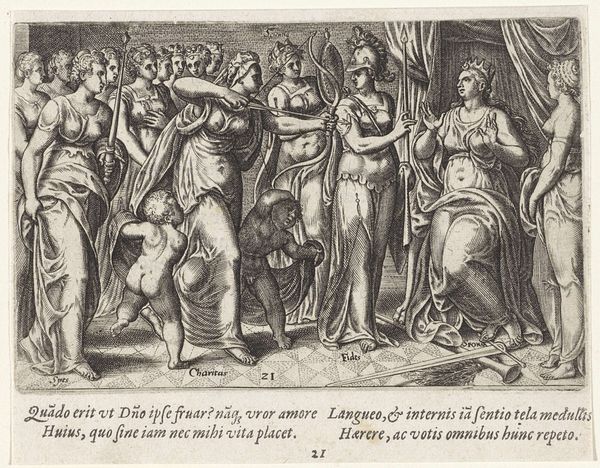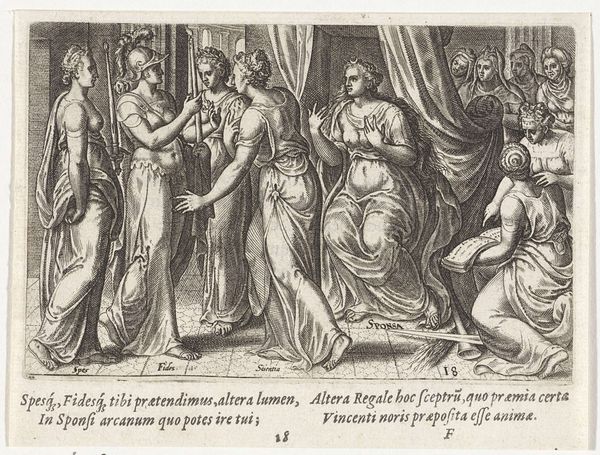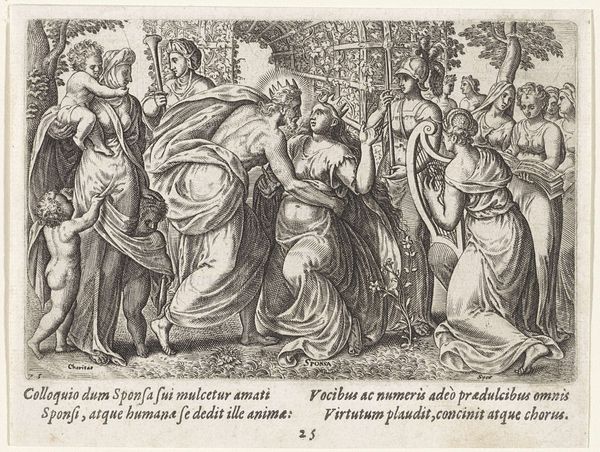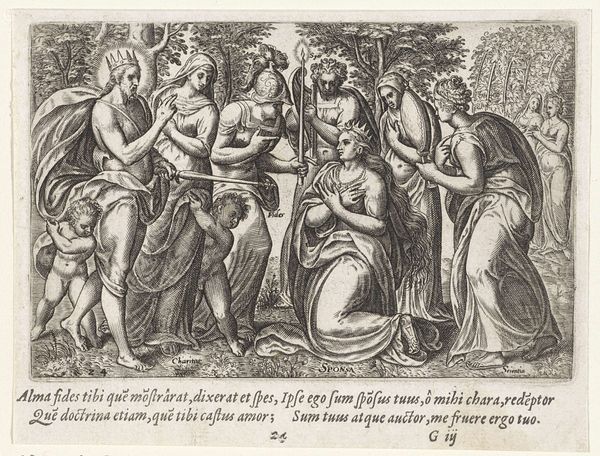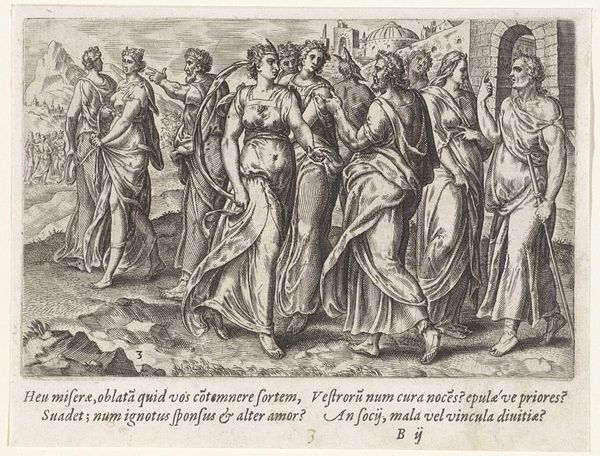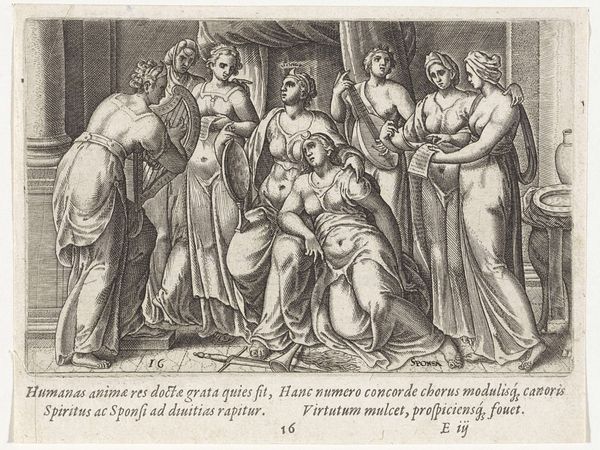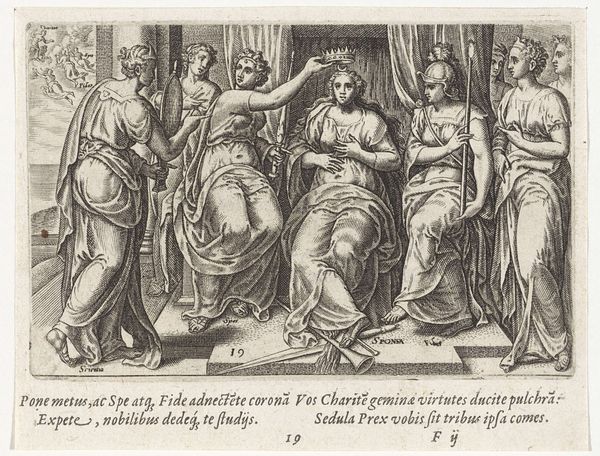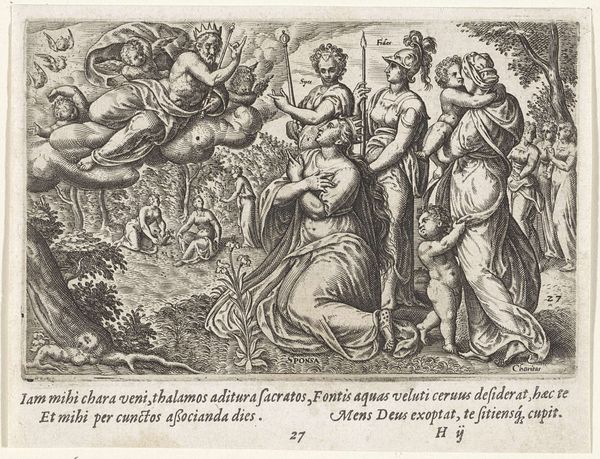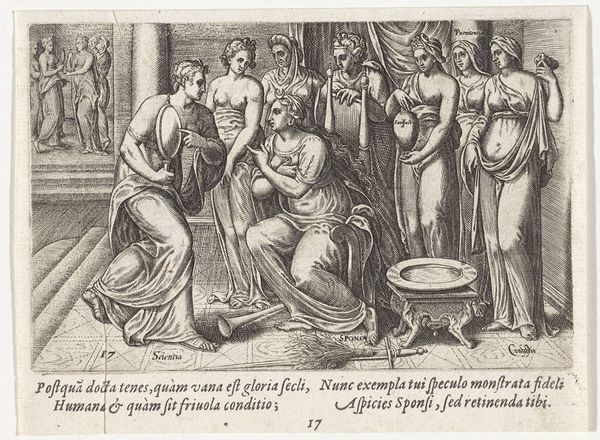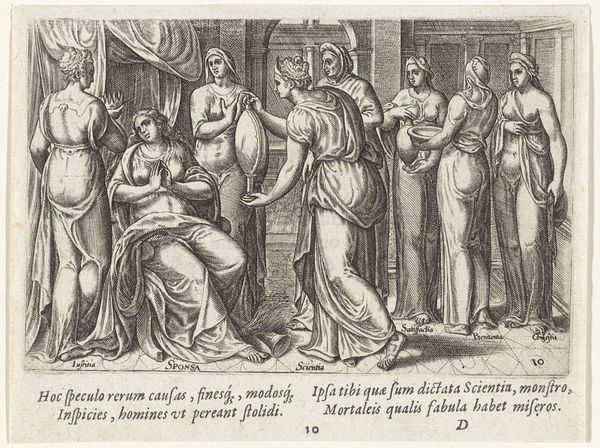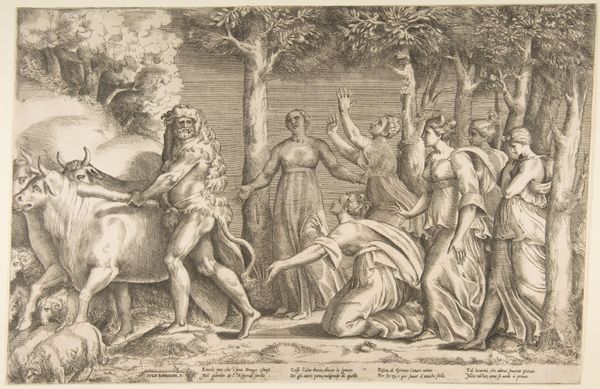
print, etching, engraving
#
allegory
# print
#
etching
#
old engraving style
#
figuration
#
11_renaissance
#
line
#
history-painting
#
northern-renaissance
#
engraving
Dimensions: height 91 mm, width 142 mm
Copyright: Rijks Museum: Open Domain
Curator: Let’s turn our attention to this engraving entitled "Bruidspaar onder een rozenboog," or "Wedding Couple under a Rose Arbor." It was created in 1574 by Wierix, and it’s currently held at the Rijksmuseum. Editor: My initial impression is one of complex allegory. The dense layering of figures and symbols feels very characteristic of Northern Renaissance art. There’s an almost palpable sense of drama woven into the textures. Curator: Indeed. Considering its social and cultural context, engravings like these played a vital role. Printmaking allowed for wider dissemination of imagery and ideas, serving didactic and propagandistic purposes. Wierix, himself, became quite central to the artistic exchanges of the period. Editor: And focusing on the "how" of its making is crucial. The labor involved in the engraving process – the precision, the repetitive action, it highlights the material conditions of artistic production during this time, pushing boundaries between art and craft. Also, note the Latin text beneath the image – more symbolic information to decode. Curator: Exactly! The text reflects on the relationship between the wedding couple, speaking to both joy and a sense of apprehension or "timor". The setting seems idealized, maybe intended to legitimize or give divine sanction to marriage as an institution? What’s your view of the symbolism? Editor: The figures flanking the couple could represent aspects of virtue and love or caution; note the horn blower's forceful stance compared with the harpsichordist's calm concentration. Each addition and figure surely communicates deeper, symbolic values on material interactions and virtuous paths through a marriage union. Curator: It underscores how the image, distributed via print, participated in broader social dialogues. These printed images shaped public perception of morality. Editor: Yes, reflecting the period’s engagement with societal and marital structures in relation to artistic practice and consumption. Considering all of this helps understand that the work did, and can do for future generations. Curator: Seeing this piece displayed in a modern institution certainly highlights how meanings and power operate with images through historical context. Editor: Yes, the layering of contexts gives rise to different avenues of analyzing its legacy, offering insight through form and meaning, alike.
Comments
No comments
Be the first to comment and join the conversation on the ultimate creative platform.
